#Girsu
Photo
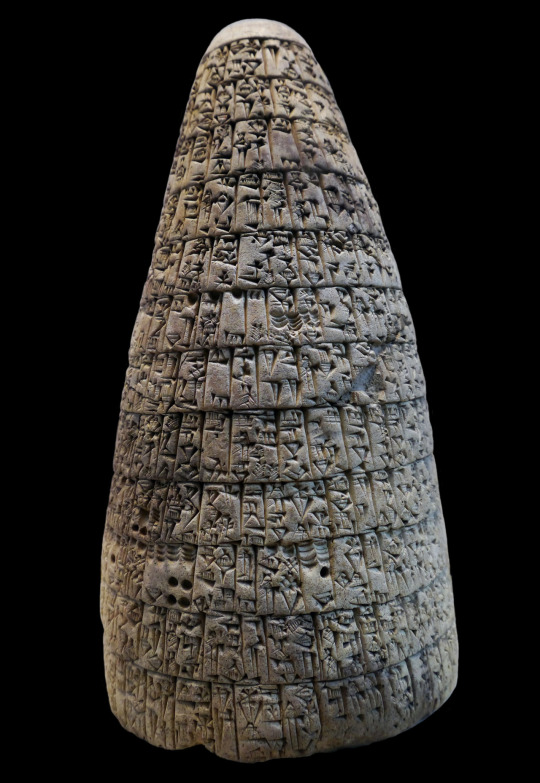
Cone of Urukagina, king of Lagash, circa 2350 BC,
Girsu, Mesopotamia,
Detailing his reforms againt abuse of "old days".
Height: 27 cm (10.6 in); diameter: 15 cm (5.9 in).
Collections of the Louvre (Department of Near Eastern Antiquities).
#art#design#sculpture#writing#words#king of lagash#girsu#mesopotamia#le louvre#cone#urukagina#styl#history#ideographic#cuneiform#sumerian
865 notes
·
View notes
Link
Since I haven’t seen it on tumblr yet, here’s an article on a major piece of Sumerian news - the recent discovery of the palace and temple at Girsu! Girsu was, for a time, the capital city of Lagash, its political peak occurring roughly halfway through its more than four millennia of occupation. The temple was dedicated to the city’s patron deity, Ninngirsu, a god of agriculture and warfare.
#sumerian news#sumerian#sumerian archaeology#sumerian mythology#archaeology#girsu#also I just realized this is my 1500th post on this blog! exciting
428 notes
·
View notes
Photo

Stone tablet with proto-cuneiform inscription
Mesopotamia (Iraq), probably Girsu (modern Tello)
Early Dynastic period, ca. 2750-2500 BCE
The text records allocations of land to various individuals, and it mentions the name of a certain Enhegal, who seems to bear the title “king (lugal) of Lagash,” but who is otherwise not attested in historical sources.
Penn Museum, Philadelphia, PA, CBS 10000
https://www.penn.museum/collections/object/347463
207 notes
·
View notes
Text


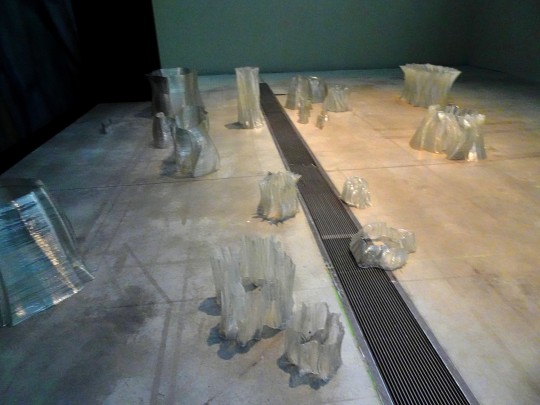


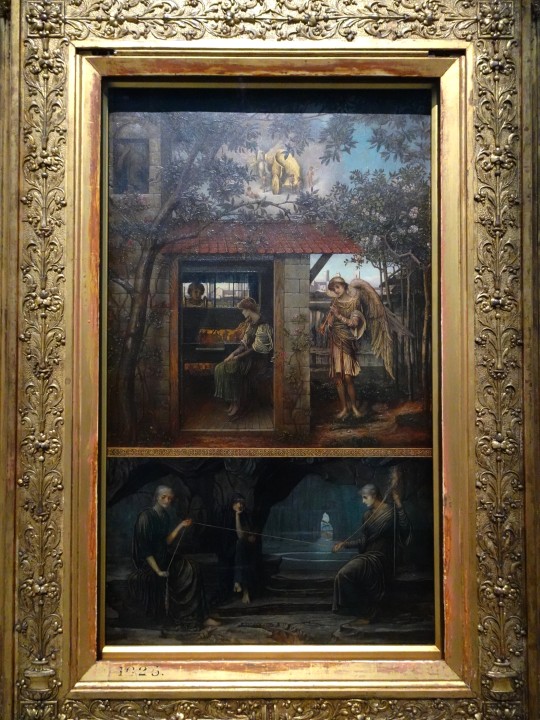
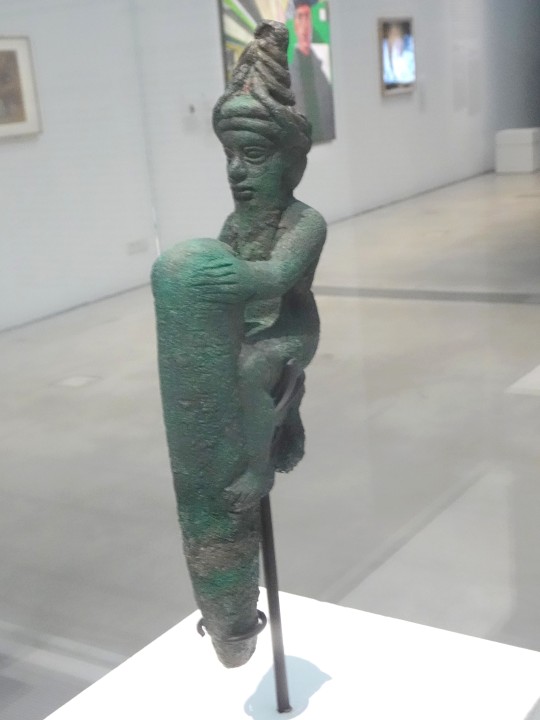
Louvre-Lens : il y a une expo : “Mondes souterrains : 20.000 Lieux sous la terre”. la suite et fin.
panneau en noyer, Cupidon - Fontainebleau, XVIe s.
John Melhuish Strudwick: "Le Fil d'Or" - 1875
Justine Emard : "Hyperphantasia, des Origines de l'Image"- 2022 (avec structures en verre et images de la Grotte Chauvet, étonnamment déformées et animées)
voir 2
voir 3
voir 2 et 4
figurine de fondation - Girsu, 2120 av. J-C.
#louvre-lens#expo#mondes souterrains#20.000 lieux sous la terre#fondations#mésopootamie#girsu#clou#noyer#cupidon#renaissance#fontainebleau#john melhuish strudwick#strudwick#parques#hyperphantasia#justine émard#préhistoire#rupestre#chauvet#grotte chauvet#tello
5 notes
·
View notes
Text
More from Iraq. The Sumerians were older than just about everyone around them. Writing began in Sumer, and that alone makes it extremely important. This palace site has so much promise!
22 notes
·
View notes
Text
Un nuevo modelo de Gestión Integral de Residuos en Jujuy
Un nuevo modelo de Gestión Integral de Residuos en Jujuy
La provincia de #Jujuy implementa un innovador modelo de #GestiónIntegraldeResiduosSólidosUrbanos (#GIRSU) con la construcción de nuevas plantas y el apoyo a #cooperativasdetrabajo, transformando la gestión de residuos en la región.
La provincia de Jujuy implementa un innovador modelo de Gestión Integral de Residuos Sólidos Urbanos (GIRSU) con la construcción de nuevas plantas y el apoyo a cooperativas de trabajo, transformando la gestión de residuos en la región.
La provincia de Jujuy implementa un innovador modelo de Gestión Integral de Residuos Sólidos Urbanos (GIRSU) con la construcción de nuevas plantas de tratamiento…
#Banco Europeo de Inversiones#BEI#Centro Ambiental Jujuy#compostaje#cooperativas de trabajo#Estación de Clasificación y Transferencia#generador de residuos#gestión de residuos#Gestión Integral de Residuos Sólidos Urbanos#gestor de residuos#GIRSU#Jujuy#Ley GIRSU#Libertador General San Martín#María Inés Zigarán#Perico#Puntos Verdes#reciclaje#residuos#San Pedro#Tasa GIRSU#UE#Unión Europea#Volcán
0 notes
Text
Un nuevo modelo de Gestión Integral de Residuos en Jujuy
Un nuevo modelo de Gestión Integral de Residuos en Jujuy
La provincia de #Jujuy implementa un innovador modelo de #GestiónIntegraldeResiduosSólidosUrbanos (#GIRSU) con la construcción de nuevas plantas y el apoyo a #cooperativasdetrabajo, transformando la gestión de residuos en la región.
La provincia de Jujuy implementa un innovador modelo de Gestión Integral de Residuos Sólidos Urbanos (GIRSU) con la construcción de nuevas plantas y el apoyo a cooperativas de trabajo, transformando la gestión de residuos en la región.
La provincia de Jujuy implementa un innovador modelo de Gestión Integral de Residuos Sólidos Urbanos (GIRSU) con la construcción de nuevas plantas de tratamiento…
#Banco Europeo de Inversiones#BEI#Centro Ambiental Jujuy#compostaje#cooperativas de trabajo#Estación de Clasificación y Transferencia#generador de residuos#gestión de residuos#Gestión Integral de Residuos Sólidos Urbanos#gestor de residuos#GIRSU#Jujuy#Ley GIRSU#Libertador General San Martín#María Inés Zigarán#Perico#Puntos Verdes#reciclaje#residuos#San Pedro#Tasa GIRSU#UE#Unión Europea#Volcán
0 notes
Text
Arqueólogos del Museo Británico han realizado un fantástico descubrimiento arqueológico en Irak, donde se ha desenterrado una creación sumeria de 4.000 años de antigüedad, lo que desafía nuestra comprensión de las tecnologías antiguas.
0 notes
Photo





.
.
.
.
.
the mysterious nature of reality
.
. .
.
.
.
.
.
.
.
.
. .
0 notes
Text

Temple Dedicated to Alexander the Great Discovered in Iraq
Archaeologists uncovered signs that Alexander the Great was worshipped as a divine figure in a 4,000-year-old temple in Iraq.
Scientists had been puzzled by the discovery of more recent Greek inscriptions at the ancient Sumerian temple of Girsu, in the modern-day town of Tello.
Now, British Museum archaeologists believe a Greek temple to Alexander the Great was founded on the site, possibly by Alexander himself.
The discovery of a silver coin minted around 330 BCE by Alexander’s troops suggests that the conqueror may have visited the temple after defeating the Persians.
This would make founding the temple one of the last acts of Alexander’s life, shortly before his death at the age of 32.
After excavations began in the 19th century, it appeared that a Greek structure may have been built on the site but the only evidence was a mysterious tablet.
In both Greek and Aramaic the tablet read: ‘Adad-nadin-aḫḫe’ meaning ‘giver of the two brothers’.
What puzzled researchers was that the temple had been abandoned in 1750 BCE, more than 1,000 years before Alexander the Great had even been born.

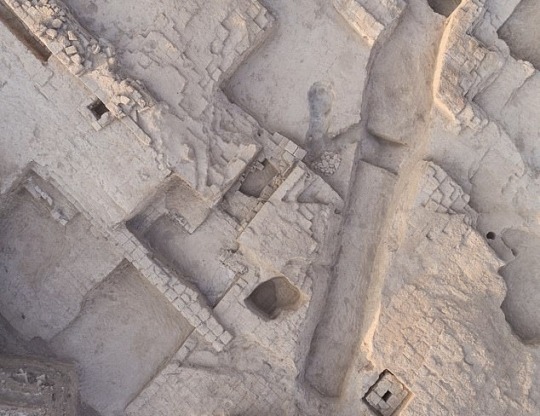
The Greeks of Alexander the Great bult temple on the Iraqi site
British Museum archaeologist Dr Sebastien Rey now believes that the Greeks had founded their own temple on the ancient site, potentially to declare the divinity of Alexander.
“It is truly mind-blowing. Our discoveries place the later temple in Alexander’s lifetime,” said Dr Rey.
“We found offerings, the kinds of offerings that would be given after a battle, figures of soldiers and cavalrymen.
“There is a chance, we will never know for certain, that he might have come here, when he returned to Babylon, just before he died,” Dr Rey told The Telegraph.
The discovery of the silver coin alongside an altar with offerings usually found in Greek temples implies the site was being used as a place of worship by Alexander’s forces.
The offerings included terracotta cavalrymen which were very similar to the ‘Companion Cavalry’ which formed the personal bodyguard of the young conqueror.
The researchers say this could mean that whoever made the offerings was very close to Alexander, or that these were possibly made by the conqueror himself.

Meaning of the Greek inscription
The discoveries also shed light on the meaning of the cryptic Greek inscription found at the site which referred to the ‘giver of the two brothers’.
Alexander the Great had an immense personal interest in the figure of Hercules and had declared himself the Son of Zeus while in Egypt, making him the brother of the mythical hero.
Alexander may have asked the Sumerian people who most resembled Hercules within their culture and been directed to the temple of Ningirsu the warrior God.
Dr Rey believes that the temple was dedicated to Zeus and the two brothers, a combined figure of Hercules and Ningursu, and Alexander the Great.
‘This site honours Zeus and two divine sons. The sons are Heracles and Alexander. That is what these discoveries suggest,’ says Dr Rey.
This theory also suggests that ancient cultures had a deep understanding of their history and a long cultural memory, knowing the exact location of the temple and its use over a millennium after it was abandoned.
The city of Girsu was part of Sumer, one of the world’s most ancient civilizations that built the first cities and created the first codes of law.
While the site of the city had been badly damaged by 20th-century conflict and destructive excavations by French archaeologists in the 19th-century, remote sensing technology suggested a larger, hidden complex.
In the Autumn of 2022, a team of researchers found walls and administrative records of a huge palace and the sanctuary where the Greek temple was later constructed.
By Tasos Kokkinidis.
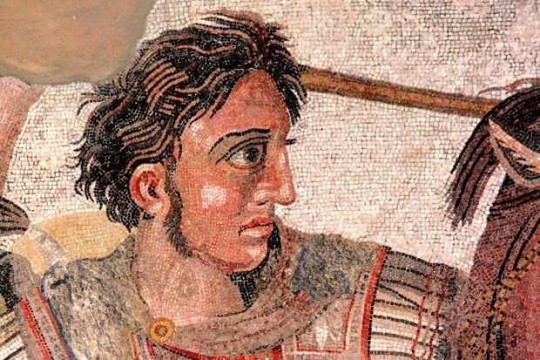
#Temple Dedicated to Alexander the Great Discovered in Iraq#ancient Sumerian temple of Girsu#ancient artifacts#archeology#archeolgst#history#history news#ancient history#ancient culture#ancient civilizations#greek history#greek heroes#greek gods#greek art
44 notes
·
View notes
Text

day number 2819204 of not being over girsu’s plot line in the world legacy lore
#literally could not care about anyone else but girsu#him xander and ravus need to start a boy band#“i have an unhealthy attachment to my little sister”#world legacy#yugioh#orcust#sketch#ygo fanart#yu gi oh#rkgk
30 notes
·
View notes
Text
The monumental royal cone of Gudea

Official or display cone excavated in Girsu (mod. Tello), dated to the Lagash II (ca. 2200-2100 BC) period and now kept in Manchester Museum, University of Manchester, Manchester, UK.
Sumerian Text
(d)nin-gir2-su ur-sag kal-ga (d)en-lil2-la2 lugal-a-ni gu3-de2-a ensi2 lagasz(ki)-ke4 nig2-du7-e pa mu-na-e3 e2-ninnu anzu2(muszen)-babbar2-ra-ni mu-na-du3 ki-be2 mu-na-gi4

Source: CDLI
Translated text
For Ningirsu, the mighty warrior of Enlil, his master, Gudea, ruler of Lagash, made a fitting thing resplendent for him, and his Eninnu with the White Thunderbird he built for him and restored for him.
Source: P234000: royal-monumental cone
I see six names in the text, the names of two gods, the name of Gudea and the name of a temple [E+ninnu] (cuneiform e2 meaning temple), the name of the city of Lagasz (lagash(ki)) and the title ensi2 meaning governor and ruler.
Ninurta or Ninĝirsu (meaning Lord of Girsu) is the name of an ancient Mesopotamian god associated with agriculture, healing, hunting, law, scribes and war. He was the son of Enlil. In the text, Enlil is introduced as the lord of Ninĝirsu. (lugal-a-ni)
Ninĝirsu was honored by Gudea, who was the ruler of the city of Lagash (ensi2 lagasz(ki)-ke4).
Gudea mentions in the text that he built the Eninnu Temple (e2 ninnu 𒂍𒐐) with White Thunderbird for Ninĝirsu.
#history of mesopotamian kings#mesopotamia#ancient mesopotamia#archaeology#ancient history#akkadian#sumerian city#sumerian#sumerian language#city of girsu#gudea#sumerian kings
0 notes
Text
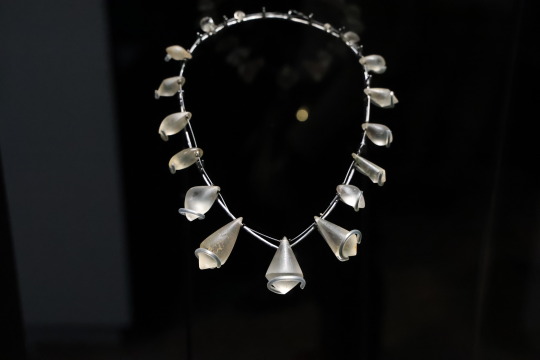
Rock crystal beads, mounted as a necklace
Excavated at Telloh (ancient Girsu), Iraq
Uruk period, ca. 3500-3000 BCE
Musée du Louvre, AO 14243; on display in the exhibition "Voyages dans le cristal" at the Musée de Cluny, Paris
9 notes
·
View notes
Text
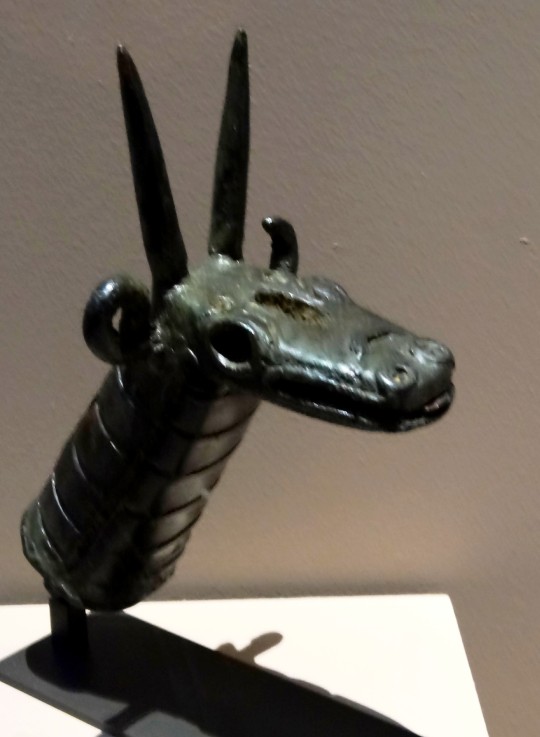



L'année du Dragon arrive !
Une longue série de dragons arrive... Après les dragons asiatiques, des dragons antiques...
Louvre-Lens, expo "L'Histoire commence en Mésopotamie" : tête d'un mushushshu, créature de Marduk - époque néo-babylonienne 700avJC
idem mais pour l'expo "Animaux fantastiques" : Caillou Michaux'', kudurru(stèle) babylonienne - moulage de 1100 av. J-C.
Marseille, musée d'histoire, expo "Trésors Coupables" - objets scythes - Caucase
voir 1 : sceaux - Girsu, époque Proto-urbaine, 3000 av.J-C. ; lazuli du prince de Kisik, époque Sumérienne, 2450 av.J-C.
#dragon#année du dragon#monstre#archéologie#louvre-lens#l'histoire commence en mésopotamie#mésopotamie#sumérien#babyloonien#mushushshu#marduk#caillou michaux#kudurru#babylone#marseille#musée d'histoire#scythes#trésors coupables#sceau#girsu#lazuli#kisik#sumer
3 notes
·
View notes
Text
Very good to see archaeology being done in Iraq, and to hear about it. I suspect much remains.
44 notes
·
View notes
Text
Equipamiento para potenciar servicios de GIRSU en Ramal y Valles
#MedioAmbiente | Equipamiento para potenciar servicios de GIRSU en Ramal y Valles
El gobernador de #Jujuy, #CarlosSadir, y la ministra #MaríaInésZigarán presentaron nuevos equipos para el programa #GIRSU, mejorando la gestión de residuos en #Ramal y #Valles.
El gobernador de Jujuy, Carlos Sadir, y la ministra María Inés Zigarán presentaron nuevos equipos para el programa GIRSU, mejorando la gestión de residuos en Ramal y Valles.
En Libertador General San Martín, el gobernador Carlos Sadir y la ministra María Inés Zigarán presentaron nuevos equipos para el programa GIRSU, mejorando la gestión y tratamiento de residuos sólidos urbanos en Ramal y…
#Banco Europeo de Inversiones#Basurales a Cielo Abierto#BEI#Caimancito#Carlos Sadir#Centro Ambiental de Jujuy#Centro Ambiental de Libertador Gral. San Martín#Chanchillos#El Carmen#GIRSU#GIRSU BEI#GIRSU Jujuy S.E.#Guillermo Bay#Jujuy Verde#Leandro Álvarez#Libertador General San Martín#Libertador Gral. San Martín#María Inés Zigarán#Maximiliano Espinoza#Ministerio de Ambiente y Cambio Climático#Mónica Aramayo#MTE#Perico#Residuos Sólidos Urbanos#San Pedro#Viviana Petrelli
0 notes